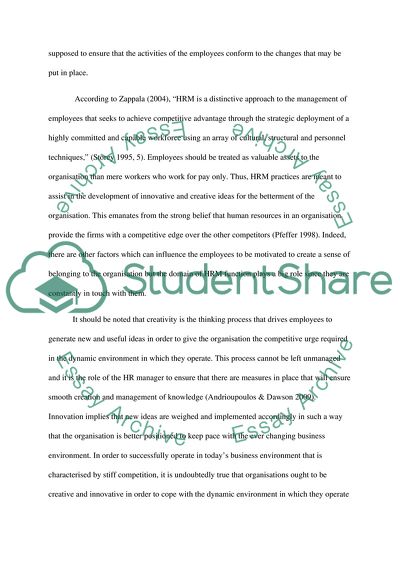Cite this document
(Managing Change, Creativity, and Innovation Literature review Example | Topics and Well Written Essays - 1500 words, n.d.)
Managing Change, Creativity, and Innovation Literature review Example | Topics and Well Written Essays - 1500 words. https://studentshare.org/human-resources/1744196-moving-into-a-knowledge-economy-global-environment-require-kind-of-understanding-assumptions-and-activities-of-the-hr-practitioner-to-play-a-key-role-in-this-development
Managing Change, Creativity, and Innovation Literature review Example | Topics and Well Written Essays - 1500 words. https://studentshare.org/human-resources/1744196-moving-into-a-knowledge-economy-global-environment-require-kind-of-understanding-assumptions-and-activities-of-the-hr-practitioner-to-play-a-key-role-in-this-development
(Managing Change, Creativity, and Innovation Literature Review Example | Topics and Well Written Essays - 1500 Words)
Managing Change, Creativity, and Innovation Literature Review Example | Topics and Well Written Essays - 1500 Words. https://studentshare.org/human-resources/1744196-moving-into-a-knowledge-economy-global-environment-require-kind-of-understanding-assumptions-and-activities-of-the-hr-practitioner-to-play-a-key-role-in-this-development.
Managing Change, Creativity, and Innovation Literature Review Example | Topics and Well Written Essays - 1500 Words. https://studentshare.org/human-resources/1744196-moving-into-a-knowledge-economy-global-environment-require-kind-of-understanding-assumptions-and-activities-of-the-hr-practitioner-to-play-a-key-role-in-this-development.
“Managing Change, Creativity, and Innovation Literature Review Example | Topics and Well Written Essays - 1500 Words”. https://studentshare.org/human-resources/1744196-moving-into-a-knowledge-economy-global-environment-require-kind-of-understanding-assumptions-and-activities-of-the-hr-practitioner-to-play-a-key-role-in-this-development.


